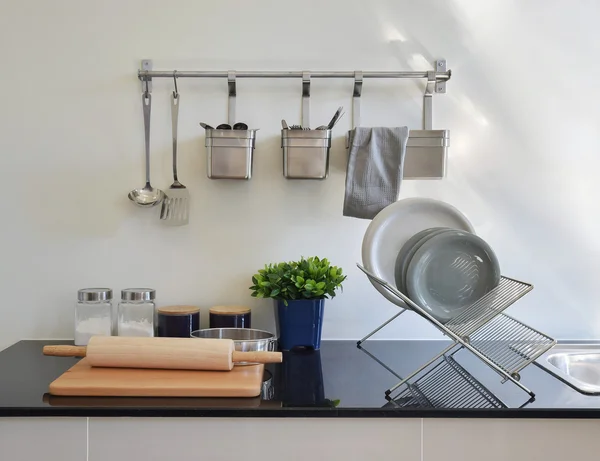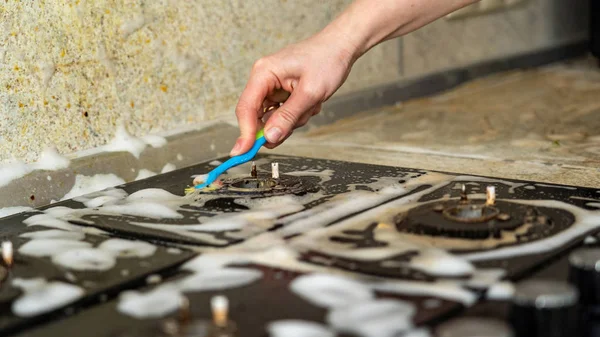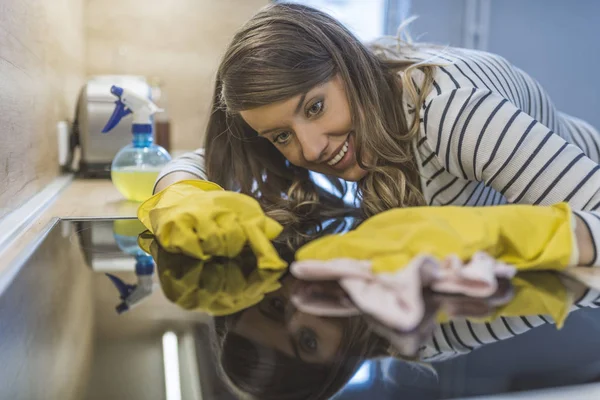
In the bustling heart of our homes, the kitchen stands as a sanctuary of culinary creativity and nourishment. It’s where we whip up gourmet feasts, experiment with new recipes, and share delicious meals with loved ones. But amidst the savory aromas and sizzling sensations, there’s a workhorse that often goes unnoticed—the glass stove top.
Maintaining a sparkling, pristine kitchen is a goal cherished by many homeowners. Among the numerous surfaces that need regular attention, a glass stove top is often at the forefront. Its sleek appearance adds an elegant touch to any kitchen, but it can also be a magnet for spills, grease, and grime. Fear not, for we are here to provide you with an in-depth guide on how to clean a glass stove top effectively and efficiently.
While it might not get the same attention as gleaming countertops or state-of-the-art appliances, your glass stove top plays a pivotal role in your cooking journey. Beyond its aesthetic appeal, it’s a key player in your culinary endeavors, providing the stage for your cookware to dance upon. And just like any star performer, it requires some care and attention to maintain its brilliance.
Why Cleaning Your Glass Stove Top Matters
In this blog, we’ll delve into the reasons why cleaning your glass stove top matters more than you might think. From safety concerns to extending the life of your appliance, we’ll uncover the hidden benefits that come with a sparkling clean stove top. So, grab your cleaning supplies and join us on this journey to discover why this seemingly mundane task can make a world of difference in your kitchen—and beyond.
Before delving into the cleaning process, it’s essential to understand why keeping your glass stove top clean is crucial. Not only does a clean stove top enhance the overall aesthetics of your kitchen, but it also ensures safety and functionality. Here’s why it matters:
Safety First
A clean stove top is a safe stove top. Spills, drips, and food residue left on the glass surface can become safety hazards. When you cook, there’s always a risk of spills or splatters. If these aren’t cleaned promptly, they can harden and become a potential source of accidents. Cleaning up after each use ensures that there are no lingering flammable substances or debris that could catch fire when the stove is next turned on.
Optimal Cooking Performance
The efficiency and performance of your glass stove top are directly affected by its cleanliness. Residue left behind can create uneven heating, leading to hot spots and cold spots on the cooking surface. This not only affects the quality of your food but can also prolong cooking times, wasting energy and increasing your utility bills. A clean surface ensures consistent and efficient heat distribution, allowing you to cook with precision.
Preventing Scratches and Damage
Glass stove tops are delicate and prone to scratches if not handled with care. Cleaning with abrasive materials or allowing debris to accumulate can result in unsightly scratches or even permanent damage. Regular cleaning using the right methods and materials helps protect the integrity of the glass, ensuring it remains smooth and free from blemishes.
Extended Lifespan
Like any kitchen appliance, a glass stove top has a limited lifespan. However, with proper care, you can extend its longevity. Neglecting regular cleaning and allowing spills to accumulate can lead to corrosion and deterioration of the heating elements beneath the glass surface. By keeping your stove top clean, you can help it last longer, saving you money on replacements.
Aesthetic Appeal
A clean glass stove top contributes to the overall aesthetic appeal of your kitchen. It’s a focal point in the cooking area, and a sparkling surface adds a touch of elegance to your space. A well-maintained stove top complements your kitchen’s decor and enhances the visual appeal of your entire kitchen.
Health and Hygiene
Food spills and residue left on the stove top can become breeding grounds for bacteria and pests. Regular cleaning not only ensures a clean cooking environment but also promotes a healthier kitchen. It reduces the risk of foodborne illnesses and pests that can be attracted to leftover food debris.
Ease of Cleaning
The longer you wait to clean your glass stove top, the more challenging it becomes to remove stubborn stains and burnt-on residue. Regular cleaning makes the task easier and less time-consuming. It saves you from the frustration of dealing with tough, baked-on messes that can require specialized cleaners or even professional intervention.

How to Clean Glass Stove Top
Cleaning a glass stove top can seem like a daunting task, but with the right approach, it’s a straightforward process. Here’s a step-by-step guide to help you clean your glass stove top effectively:
Materials You’ll Need
- Warm, soapy water
- Soft cloth or sponge
- Razor blade scraper
- Baking soda (optional)
- Vinegar (optional)
- Microfiber cloth
- Glass stove top cleaner (optional)
Before you begin, ensure that your glass stove top is completely cool. Attempting to clean a hot surface can result in burns or injuries. Also, make sure to turn off and unplug the stove if it’s electric, or switch off the gas supply if you have a gas stove.
Remove Loose Debris
Use a soft cloth or sponge to gently wipe away any loose crumbs, food particles, or debris from the surface. This step helps prevent scratching when you move on to more thorough cleaning.
Soapy Water Cleaning
Fill a basin or sink with warm, soapy water. Dip your cloth or sponge into the soapy water, wring it out, and then wipe down the entire glass surface. The warm, soapy water will help break down grease and soften dried-on stains. Pay extra attention to areas with stubborn residue.
Scraper for Stubborn Stains
For tough, burnt-on residue that won’t come off with soapy water alone, you can use a razor blade scraper designed for glass stove tops. Hold the scraper at a 45-degree angle and gently scrape the residue, taking care not to press too hard to avoid scratching the glass. Always keep the blade flat against the surface.
Baking Soda Paste (Optional)
For really stubborn or baked-on stains, you can make a paste with baking soda and a small amount of water. Apply this paste to the stained area and let it sit for a few minutes. Then, gently scrub the area with a soft cloth or sponge. The mild abrasiveness of baking soda can help lift off stubborn stains.
Vinegar (Optional)
If there are mineral deposits or water spots on your glass stove top, you can use white vinegar to remove them. Moisten a cloth or sponge with vinegar and gently rub the affected areas. Vinegar’s acidity helps dissolve mineral deposits and leaves the surface sparkling.
Rinse and Dry
Once you’ve cleaned the glass stove top to your satisfaction, rinse the surface thoroughly with clean water to remove any soapy residue or vinegar. Then, use a clean, dry microfiber cloth to wipe the stove top dry. This step helps prevent streaks and water spots.
Optional Glass Stove Top Cleaner
If you want to achieve a pristine finish, you can use a specialized glass stove top cleaner. Apply a small amount of the cleaner to a clean cloth or sponge and gently buff the glass surface in a circular motion. Follow the product instructions for the best results.

Regular Maintenance
To keep your glass stove top looking its best, make a habit of wiping it down after each use to prevent spills from becoming stubborn stains. Regular maintenance will make deep cleaning less frequent and more manageable.
Book us a call at Ivy Cleans if you are in need of professional cleaners to work on your glass stove top.
